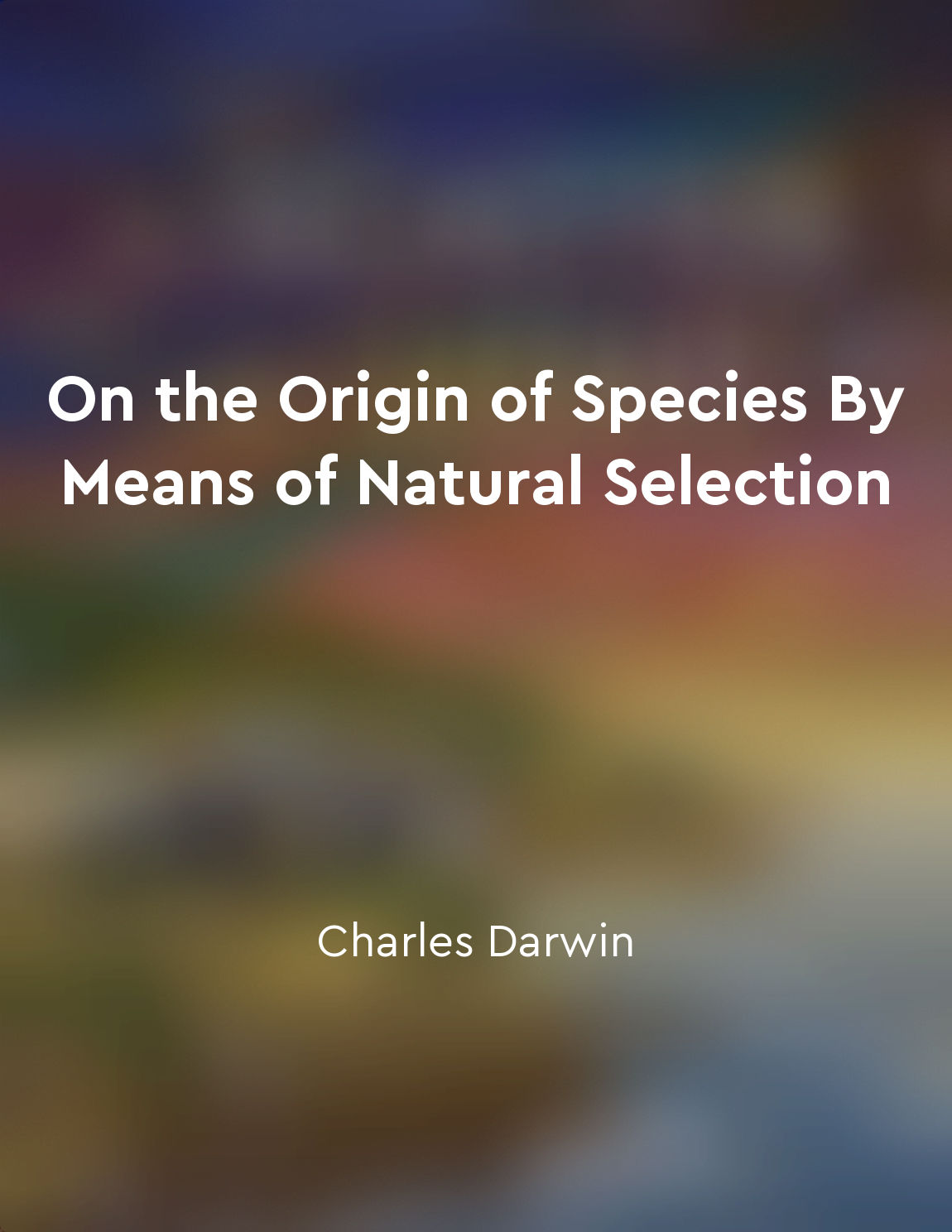Vestigial structures are remnants of ancestral traits from "summary" of The Greatest Show on Earth by Richard Dawkins
One of the most compelling pieces of evidence for evolution is the presence of vestigial structures in living organisms. These structures are remnants of traits that were functional in an organism's ancestors but have lost their original purpose over time. They serve as a clear indication of the evolutionary history of a species. Vestigial structures can be found in a wide range of organisms, from whales with tiny pelvic bones to cave-dwelling fish with non-functional eyes. These structures provide a window into the past, revealing the evolutionary changes that have occurred over millions of years. By studying vestigial structures, scientists can trace the lineage of a species and understand how it has evolved over time. The presence of vestigial structures is consistent with the idea of descent with modification, as proposed by Charles Darwin. According to this theory, all organisms are related through common ancestry, and changes in traits occur over generations as a result of natural selection. Vestigial structures are a tangible manifestation of this process, showing how features that were once useful can become obsolete as environments change. In some cases, vestigial structures can still serve a minor function or have the potential to be repurposed in the future. For example, the wings of flightless birds may be used for balance or display, even though they are no longer capable of flight. This demonstrates the versatility of biological structures and the ways in which they can be adapted over time.- Vestigial structures provide compelling evidence for the theory of evolution by natural selection. They offer a glimpse into the past and shed light on the interconnectedness of all living organisms. By studying these remnants of ancestral traits, scientists can unravel the mysteries of evolution and gain a deeper understanding of the natural world.
Similar Posts
Species adapt to survive in changing environments
In the ceaseless dance of life, no species can afford to stand still. Every living thing must keep moving, keep changing, keep ...

Atheism is not a belief system
Atheism is not a belief system. It is not a worldview, a philosophy, or a faith. It is simply a lack of belief in gods. This di...
Biotechnology can play a crucial role in sustainable agriculture and food production
Biotechnology has the potential to revolutionize agriculture and food production by addressing the challenges faced by farmers ...
Humans have impacted environment
It is difficult to overstate the extent to which humans have impacted the environment. Over the course of our relatively brief ...
Science education is a journey of discovery and exploration
Science education is not just about memorizing facts and figures; it is a process of discovery and exploration. It involves ask...

Climate change and global warming
Climate change and global warming are two closely related phenomena that have become major topics of concern in recent years. G...

Human beliefs in ideologies like liberalism and socialism shape global politics
Human beliefs in ideologies such as liberalism and socialism play a crucial role in shaping the dynamics of global politics. Th...
The nervous system facilitates communication within the body
The nervous system plays a crucial role in facilitating communication within the body. It is responsible for transmitting signa...

Sexual selection for desirable traits
One of the most intriguing aspects of evolution is the idea that certain traits can be selected for based on their desirability...

